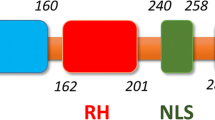Abstract
The article shortly describes the life path of Erwin Chargaff, one of the most famous figures in the history of molecular biology and genetics. Chargaff was born in Chernivtsi (Austria-Hungary, now Ukraine) but during the First World War his family was forced to move to Vienna. After graduating from the University of Vienna, Chargaff worked in Berlin, where he studied bacterial lipids. Due to Nazis coming to power in Germany, Chargaff moved to Paris and later (1935) emigrated to the USA and obtained a position at the Columbia University, where he initially invastigated the role of phospholipids in blood clotting. In year 1944, applying novel methods Chargaff initiated intensive investigation of the chemical composition of nucleic acids from taxonomically distant species and established two rules, which were later named after him. The first Chargaff's rule provided a significant support to Watson and Crick in construction of their double helical DNA model. The explosion of atomic bombs over Hiroshima and Nagasaki forced Chargaff to think about the moral responsibility of researchers and science to mankind. He began to raise these issues in the press and manifested himself as a talented journalist, who criticized the bureaucratization of science and its transformation into a way of earning money. Despite decades of life in America, spiritually Erwin Chargaff always remained a European, who never forgot his roots and always remembered his native land.
Similar content being viewed by others
References
Chargaff, E., A fever of reason. The early way, Annu. Rev. Biochem., 1975, vol. 44, pp. 1–20.
Cohen, S. and Lehman, R., Erwin Chargaff. 1905–2002. Biographical Memoir, Washington, D.C.: National Academy of Sciences, 2010.
Feigl, F. and Chargaff, E., Über die Reaktionsfähigkeit von Jod organischen Lösungsmitteln (I.), Monatsh. Chem., 1928, vol. 49, pp. 417–428.
Feigl, F. and Chargaff, E., Über die analytische Auswertung einer durch CS2 bewirkten Katalyse zur jodometrischen Bestimmung von Aziden und zum Nachweis von CS2, Z. Anal. Chem., 1928, vol. 74, pp. 376–380.
Anderson, R.J. and Chargaff, E., The chemistry of the lipoids of tubercle bacilli. V. Analysis of the acetonesoluble fat, J. Biol. Chem., 1929, vol. 4, pp. 703–717.
Anderson, R.J. and Chargaff, E., The chemistry of the lipoids of tubercle bacilli. VI. Concerning tuberculostearic acid and phthioic acid from the acetone-soluble fat, J. Biol. Chem., 1929, vol. 5, pp. 77–88.
Chargaff, E., Ein Polysaccharid aus den Lipoiden der Tuberkelbakterien, Z. Physiol. Chem., 1930, vol. 91, pp. 172–178.
Chargaff, E., The reactivity of iodine cyanide in different organic solvents, J. Am. Chem. Soc., 1928, vol. 51, pp. 1999–2002.
Chargaff, E., Über die katalytische Zersetzung einiger Jodverbindungen, Biochem. Z., 1929, vol. 215, pp. 69–78.
Chargaff, E., Zur Kenntnis der Pigmente der Timotheegrasbakterien, Zentralbl. Bacteriol., 1930, vol. 119, pp. 121–123.
Chargaff, E., Über die Lipoige des Bacillus CalmetteGuérin (BCG), Z. Physiol. Chem., 1933, vol. 217, pp. 115–137.
Chargaff, E., Über das Fett und das Phosphatid der Diphtheriebakterien, Z. Physiol. Chemie, 1933, vol. 218, pp. 223–240.
Avery, O.T., MacLeod, C.M., and McCarty, M., Studies on the chemical nature of the substance inducing transformation of pneumococcal types, J. Exp. Med., 1944, vol. 79, pp. 137–158.
Chargaff, E., How genetics got a chemical education, Ann. N.Y. Acad. Sci., 1979, vol. 325, pp. 345–360.
Vischer, E. and Chargaff, E., The separation and characterization of purines in minute amounts of nucleic acid hydrolysates, J. Biol. Chem., 1947, vol. 168, pp. 781–782.
Vischer, E. and Chargaff, E., The separation and quantitative estimation of purines and pyrimidines in minute amounts, J. Biol. Chem., 1948, vol. 176, pp. 703–714.
Chargaff, E., Chemical specificity of nucleic acids and mechanism of their enzymatic degradation, Experientia, 1950, vol. 6, pp. 201–209.
Judson, H., The Eighth Day of Creation, Cold Spring Harbor Press, 1996.
Chargaff, E., Heraclitean Fire, New York: Rockefeller University Press, 1978.
Chargaff, E., Balderdashian pandemonium, in A Brief Moment of Triumph, Moscow: Nauka, 1989, pp. 176–184.
Chargaff, E., Brevier der Ahnungen: Eine Auswahl aus dem Werk, Stuttgart: Klett-Cotta, 2002.
Movchan, M.M., Labyrinths of fear of old age: problems and prospects, Humanitarian Bulletin of Zaporizhzhya State Engineering Academy, 2013, vol. 53, pp. 77–88.
Author information
Authors and Affiliations
Corresponding author
Additional information
Published in Ukrainian in Tsitologiya i Genetika, 2016, Vol. 50, No. 1, pp. 80–87.
The article is published in the original.
About this article
Cite this article
Volkov, R.A., Rudenko, S.S. War and world of Erwin Chargaff (Dedicated to 110th anniversary of birth). Cytol. Genet. 50, 72–78 (2016). https://doi.org/10.3103/S0095452716010102
Received:
Published:
Issue Date:
DOI: https://doi.org/10.3103/S0095452716010102




